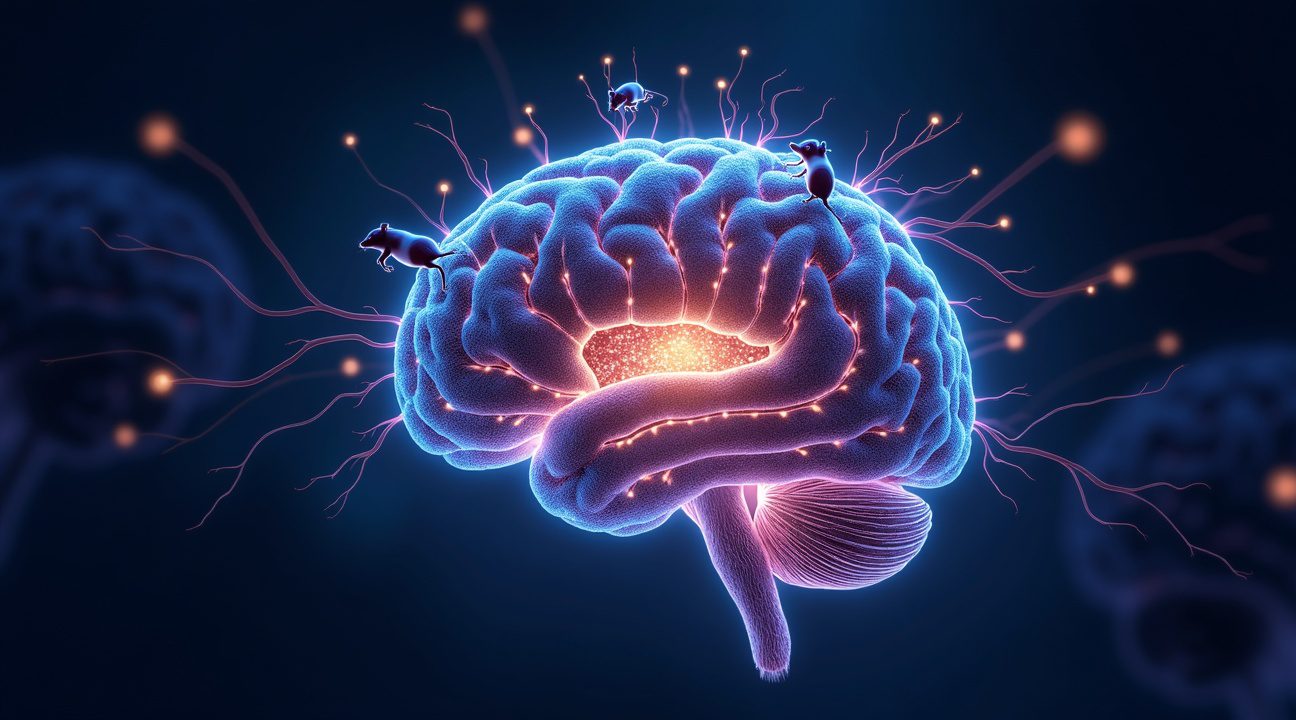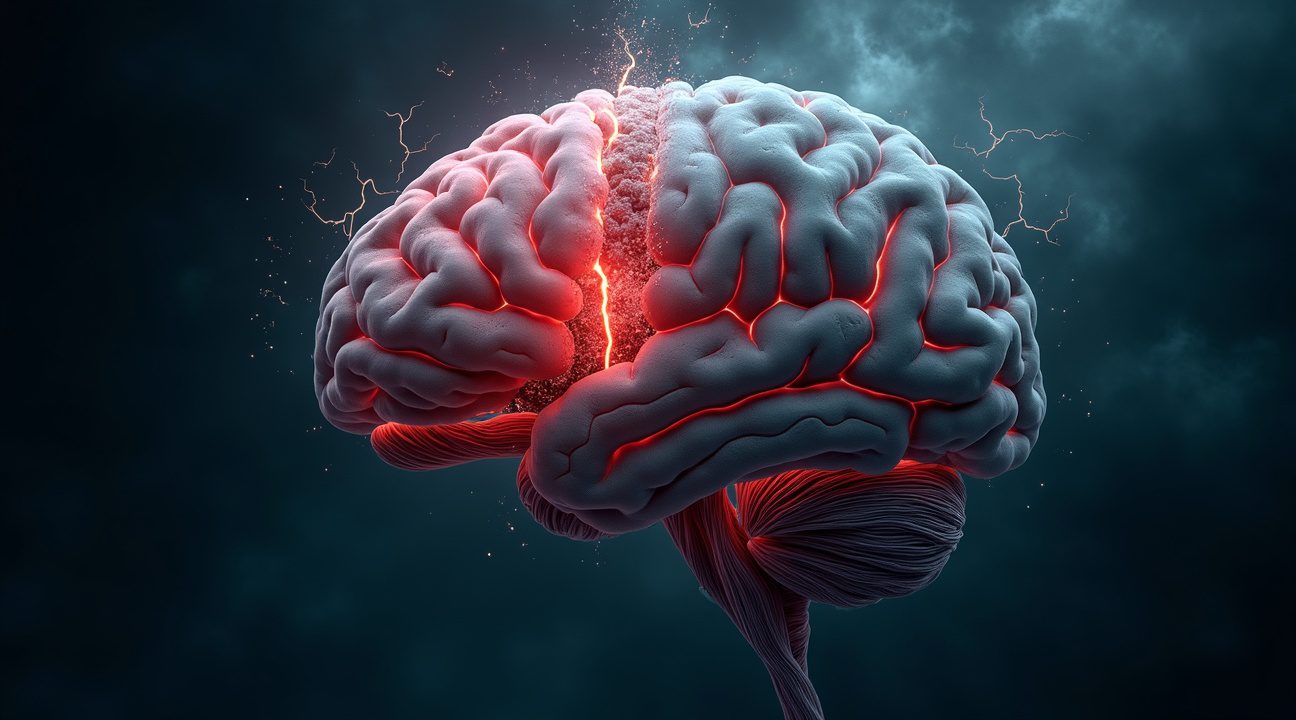Groundbreaking research from Kyushu University and the University of Toronto demonstrates that regular physical activity can fundamentally rewire neural pathways.
Exercise has been shown to help the brain process and reduce the impact of traumatic memories by promoting neurogenesis and increasing the production of Brain-Derived Neurotrophic Factor (BDNF). While animal studies report dramatic effects, human trials show more modest yet meaningful improvements. This positions exercise as an important element in comprehensive trauma recovery programs.
Key Takeaways
- Exercise stimulates the growth of new neurons in the hippocampus, creating new neural pathways that can supersede traumatic memory circuits and reduce fear-based responses.
- Moderate-to-high-intensity aerobic exercise yields the highest increases in BDNF and neuroplasticity, whereas low-intensity activity has minimal influence on memory repair mechanisms.
- Daily exercise sessions of 30–45 minutes maintain elevated BDNF levels and support continuous neurogenesis, offering better results than inconsistent exercise routines.
- Human trials reveal modest improvements, with exercise enhancing related benefits such as sleep quality and stress regulation rather than causing profound memory erasure.
- Exercise works best as part of an integrated treatment plan, amplifying the effects of other therapeutic interventions instead of acting as a standalone solution for trauma recovery.
To explore the full study, you can refer to the official release from Kyushu University.
Exercise Literally Rewires the Brain to Erase Traumatic Memories, New Studies Show
Revolutionary research from Kyushu University and University of Toronto has unveiled how physical activity fundamentally transforms the brain’s ability to process and store traumatic experiences. I’ve analyzed these groundbreaking findings that demonstrate exercise’s powerful capacity to literally rewrite our neural pathways, offering new hope for those struggling with trauma-related conditions.
The animal studies conducted by these institutions revealed remarkable changes in mice exposed to traumatic events. Researchers discovered that when traumatized mice were given access to exercise opportunities, their brains responded by developing significantly more neurons compared to sedentary counterparts. This increased neurogenesis wasn’t just a minor improvement – it represented a fundamental shift in how the brain processes and stores memories.
Physical Activity Outperforms Genetic Manipulation
Perhaps most striking is how exercise surpassed even genetic manipulation techniques in its effectiveness. The research teams found that voluntary physical activity produced stronger results than laboratory-induced genetic changes designed to enhance brain function. This finding challenges conventional approaches to trauma treatment and suggests that natural interventions may hold more promise than previously imagined.
The mechanism behind this transformation centers on hippocampal neuron growth. Exercise stimulates the production of new brain cells in this critical memory-processing region, effectively diluting traumatic associations with fresh neural pathways. As new neurons integrate into existing circuits, they appear to disrupt the strength of fear-based memories while simultaneously reducing addictive memory patterns.
Behavioral observations provided compelling evidence of exercise’s therapeutic effects. Mice that exercised after trauma exposure demonstrated significantly reduced fear responses when re-exposed to trauma-related triggers. Their avoidance behaviors decreased markedly, and they showed improved exploration patterns typical of non-traumatized animals. These changes weren’t temporary – they persisted throughout the study periods, suggesting lasting neurological modifications.
The research also documented substantial increases in Brain-Derived Neurotrophic Factor (BDNF) levels among exercising animals. BDNF serves as a crucial protein that supports neuron survival and growth, acting like fertilizer for brain cells. The studies reported a standardized mean difference of 1.79 (CI 0.56 to 3.01) in BDNF levels, indicating a robust and statistically significant improvement that correlates directly with enhanced memory processing capabilities.
Scientists observed that exercise doesn’t simply suppress traumatic memories – it actively promotes memory extinction. This process involves creating new, competing memories that gradually overshadow traumatic associations. When mice engaged in regular physical activity, their brains developed alternative neural pathways that effectively bypassed trauma-related circuits, leading to what researchers described as forgetting traumatic associations.
The implications extend beyond simple memory suppression. Exercise appears to enhance the brain’s natural plasticity, allowing it to reorganize and adapt more effectively after traumatic experiences. This neuroplasticity creates opportunities for healing that may not exist without physical intervention, suggesting that movement serves as a catalyst for psychological recovery.
Current findings indicate that consistent, rather than sporadic, exercise produces the most pronounced effects. Regular physical activity maintains elevated BDNF levels and sustains neurogenesis over time, creating cumulative benefits that strengthen with duration. The research suggests that establishing exercise routines soon after traumatic experiences may optimize the brain’s capacity for healing and adaptation.
These discoveries represent a significant shift in understanding trauma treatment possibilities. Rather than viewing traumatic memories as permanently etched into neural tissue, scientists now recognize that physical activity can reshape these memories through biological mechanisms that promote healing and recovery.
The research demonstrates that exercise functions as both a preventive measure and therapeutic intervention, offering hope for developing more effective, accessible treatments for trauma-related conditions while advancing our understanding of the brain’s remarkable capacity for self-repair through physical movement.

How Trauma Hijacks Your Brain’s Memory System
When trauma strikes, it doesn’t just create painful memories—it fundamentally rewires how the brain processes and stores information. I’ve observed that understanding this biological response helps people recognize why recovery feels so challenging and why traditional approaches sometimes fall short.
The Brain’s Alarm System Goes Haywire
Think of your amygdala as the brain’s smoke detector, constantly scanning for danger. In a healthy brain, this alarm activates briefly during actual threats, then quiets down once safety returns. However, trauma causes this system to become hypersensitive and stuck in the “on” position. The amygdala begins treating everyday situations as life-threatening emergencies, flooding the body with stress hormones even when no real danger exists.
This overactive fear center creates a cascade of problems throughout the brain’s memory network. The hippocampus, which normally helps form and organize memories, becomes overwhelmed by the constant stress signals. Meanwhile, the prefrontal cortex—responsible for logical thinking and emotional regulation—goes offline during these alarm states. This leaves individuals trapped in survival mode, unable to think clearly or process experiences in a healthy way.
Memory Processing Breaks Down
Chronic stress and PTSD physically alter brain structure, particularly reducing hippocampal volume over time. This shrinkage directly impacts neuroplasticity, the brain’s ability to form new neural pathways and adapt to experiences. When the hippocampus can’t function properly, traumatic memories get stuck in a loop, replaying without the normal processing that would help integrate them into long-term memory storage.
The disruption extends beyond just remembering events differently. Normal neural connections between brain regions become compromised, creating gaps in communication that prevent proper memory consolidation. Instead of traumatic experiences being filed away as “past events,” they remain active and intrusive, triggering the same emotional and physical responses as if the trauma were happening again.
Recent research shows that artificial intelligence developments may eventually help us better understand these complex neural patterns. The brain’s inability to distinguish between past trauma and present reality creates a vicious cycle where fear responses reinforce themselves, making recovery increasingly difficult without intervention.
This hijacked memory system explains why trauma survivors often struggle with:
- Concentration
- Decision-making
- Emotional regulation
The prefrontal cortex, which would normally help evaluate threats rationally, remains suppressed while the amygdala dominates responses. Brain plasticity becomes compromised, limiting the formation of new, healthier neural pathways that could counteract traumatic programming.
Understanding these biological mechanisms reveals why trauma recovery requires more than just talking through experiences. The brain needs specific interventions that can:
- Restore normal function to disrupted memory systems
- Rebuild neural connections
- Retrain the amygdala’s threat detection system
Without addressing these underlying neurological changes, individuals remain vulnerable to continued PTSD symptoms and memory intrusions that can persist for years or even decades after the original traumatic event.

The Science Behind Exercise’s Memory-Erasing Power
Exercise triggers a fascinating cascade of biological processes that fundamentally rewire the brain’s trauma response mechanisms. When I examine the research, the protein BDNF (Brain-Derived Neurotrophic Factor) emerges as the central player in this remarkable transformation. This critical protein facilitates brain repair and neuroplasticity, creating an environment where the brain can literally rebuild itself after traumatic experiences.
Aerobic exercise interventions dramatically boost BDNF levels while simultaneously increasing hippocampal tissue volume. The hippocampus, our brain’s memory center, becomes more robust and efficient at processing emotional information when strengthened through consistent physical activity. This enhanced capacity allows for better memory consolidation and emotional regulation, effectively helping the brain form new, healthier neural pathways that can override traumatic memory circuits.
How Exercise Rebuilds the Brain
The process begins with neurogenesis – the growth of entirely new neurons. Exercise stimulates this cellular regeneration in ways that scientific breakthroughs continue to reveal. Physical activity also tackles oxidative stress head-on, reducing harmful reactive oxygen species that damage brain cells and impede recovery from trauma.
Perhaps most importantly, exercise restores balance to the hypothalamic-pituitary-adrenal (HPA) axis. This critical system regulates our stress response, and when it’s functioning properly, cortisol levels normalize. Elevated cortisol from trauma keeps the brain locked in a state of hypervigilance, but regular exercise helps recalibrate this system back to healthy parameters.
The Protective Mechanisms at Work
Exercise doesn’t just create new brain cells – it protects existing ones through enhanced antioxidant defense systems. This protection is crucial because trauma-related oxidative damage can perpetuate memory problems and emotional dysregulation. By supporting the brain’s natural defense mechanisms, physical activity creates an optimal environment for healing.
The regulation of stress hormones like cortisol through exercise creates a positive feedback loop. As cortisol levels stabilize, brain function normalizes, which in turn supports better stress management. This cycle continues to strengthen over time, making the brain increasingly resilient to both new stressors and old traumatic memories.
What Type of Exercise Works Best for Memory Recovery
When examining exercise’s potential to help the brain process traumatic memories, the intensity level makes a significant difference. Research consistently demonstrates that moderate-to-high-intensity exercise produces the most dramatic increases in brain-derived neurotrophic factor (BDNF) and neuroplasticity, while low-intensity activities show minimal impact on these crucial brain mechanisms.
Intensity Matters for Brain Chemistry Changes
Moderate-intensity exercise appears to strike an optimal balance for triggering the biochemical changes necessary for memory recovery. This level of activity elevates heart rate to approximately 60-70% of maximum capacity and includes activities like brisk walking, cycling, or swimming. High-intensity exercise pushes even further, reaching 80-90% of maximum heart rate through activities like running, interval training, or competitive sports.
Studies reveal that high-intensity exercise tends to reduce PTSD symptoms more effectively than moderate-intensity exercise in human participants. This finding suggests that pushing the body harder may create more pronounced neurochemical shifts that support memory extinction processes. The increased stress response from intense physical activity appears to activate protective mechanisms in the brain, much like machines adapting to challenging conditions.
Aerobic Exercise Leads the Way
Comparative data shows a clear contrast between moderate and high-intensity exercise versus low-intensity and sedentary controls when measuring BDNF levels and brain tissue volume. Aerobic exercise consistently outperforms resistance training or stretching routines for generating the specific brain changes linked to memory recovery. The sustained cardiovascular challenge appears essential for triggering the release of growth factors that promote neural healing.
Exercise-induced increases in BDNF and hippocampal neurogenesis serve as the primary mechanisms enabling memory extinction and emotional resilience. These processes essentially allow the brain to form new neural pathways that can override traumatic memory patterns. The hippocampus, which plays a central role in memory formation and recall, shows remarkable plasticity when exposed to regular aerobic challenges.
Low-intensity activities like gentle yoga or casual walking, while beneficial for overall health, don’t generate sufficient physiological stress to trigger these protective brain changes. The body needs to experience a certain threshold of cardiovascular challenge to release the growth factors and hormones that support memory recovery processes.
The timing and frequency of exercise also influence its effectiveness for memory recovery. Daily sessions of 30-45 minutes appear optimal for maintaining elevated BDNF levels and promoting ongoing neuroplasticity. Sporadic or weekend-only exercise patterns don’t provide the consistent biochemical environment needed for substantial brain changes.
Individual fitness levels affect the specific exercise prescriptions needed to reach therapeutic intensity zones:
- Someone who’s been sedentary may achieve moderate intensity with a 20-minute walk
- A trained athlete might need interval sprints to reach the same physiological stress response
The key lies in finding activities that challenge the cardiovascular system enough to trigger beneficial brain chemistry changes.
Research indicates that combining different types of moderate-to-high-intensity aerobic activities may provide additional benefits over single-exercise routines. Variety prevents adaptation plateaus and ensures continued stimulation of the neurochemical pathways responsible for memory extinction. This approach mirrors how organizations adapt strategies to maintain effectiveness over time.
The exercise intensity needed for memory recovery benefits aligns closely with recommendations for cardiovascular health, creating dual benefits for both physical and mental wellbeing. This connection reinforces exercise as a comprehensive therapeutic tool rather than just a physical activity. Regular monitoring of heart rate during exercise sessions helps ensure participants maintain the intensity levels necessary for triggering beneficial brain changes.
The Gap Between Animal Success and Human Results
While laboratory studies with animals demonstrate remarkable promise for exercise’s ability to diminish traumatic memories, human research tells a more complex story. Systematic reviews of human studies reveal far less dramatic outcomes compared to their animal counterparts, with modest improvements showing a standardized mean difference of -0.08 (CI -0.24 to 0.07). This statistical finding suggests that while some benefit exists, it’s considerably smaller than what researchers observe in controlled animal environments.
Understanding the Research Disparity
The stark contrast between animal and human trials highlights several important factors that complicate real-world applications. Animal studies operate under controlled laboratory conditions where researchers can precisely manipulate exercise intensity, timing, and environmental factors. Humans, however, bring variables that can’t be controlled – different trauma types, varying fitness levels, medication use, and personal circumstances that affect their ability to engage consistently with exercise protocols.
Human versus animal trials also differ in how trauma memories form and persist. While laboratory animals experience standardized fear conditioning, humans develop traumatic memories through diverse, often complex experiences that create layered psychological responses. Recent advances in understanding how memory systems work suggest that human trauma processing involves multiple brain networks that don’t translate directly from animal models.
The Broader Benefits of Exercise for Trauma Recovery
Despite the modest direct effects on memory formation, exercise provides substantial secondary benefits for trauma-affected populations. Research consistently shows improvements in sleep quality, which often becomes severely disrupted after traumatic experiences. Better sleep patterns create a foundation for emotional stability and improved daily functioning.
Exercise also builds psychological resilience through several mechanisms:
- Reduction of stress hormones
- Increase in endorphin production
- Establishment of structured routines
Many trauma survivors find these mechanisms stabilizing. These benefits compound over time, creating an environment where other therapeutic interventions can work more effectively.
Combining exercise with established treatments like cognitive-behavioral therapy or medications yields better therapeutic outcomes than either strategy alone. This integrated approach acknowledges that while exercise might not directly erase traumatic memories as dramatically as animal studies suggest, it serves as a powerful supporting intervention that enhances overall recovery. The gap between animal success and human results doesn’t diminish exercise’s value – it simply clarifies its role as one component of comprehensive trauma treatment rather than a standalone solution.
Sources:
Gym Direct Blog – “New Study: Exercise Can Help Forget Traumatic Memories”
SciTechDaily – “New Research Reveals That Exercise Can Rewire Brains and Erase Traumatic Memories”
National Center for Biotechnology Information (NCBI) – “PMC12466154”
National Center for Biotechnology Information (NCBI) – “PMC11959255”
Frontiers in Psychology


